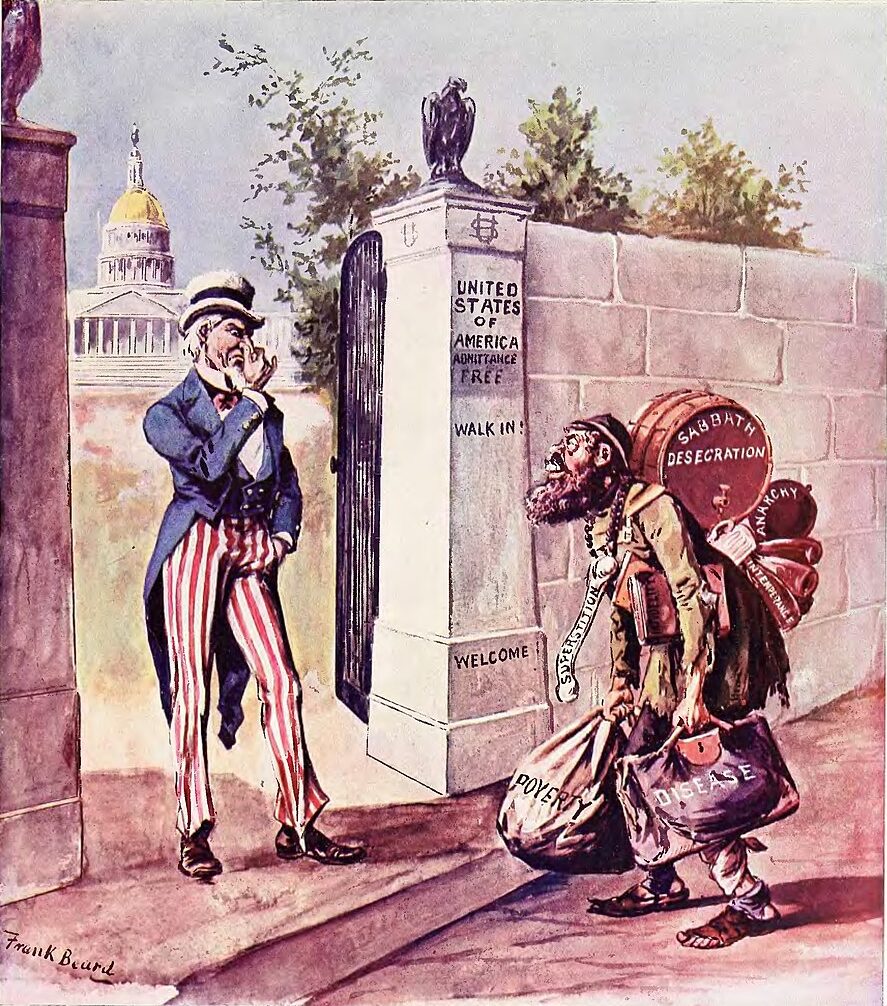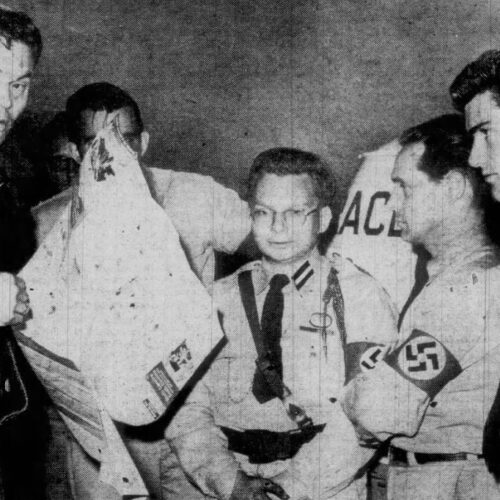Lessons
To Bigotry No Sanction: Antisemitism in the United States

State standards
Results
Length: 60-120 minutes | Grades: 6-12 | Themes: antisemitism, democratic values
Lesson Overview
In 1790, President George Washington promised the Jewish community in Newport, R.I., that the new nation would give “to bigotry no sanction.” Yet throughout United States history, many groups, including Jews, have faced discrimination and hate. While Jews have found opportunity in America, antisemitism has remained, fueled by harmful myths that paint them as racially different or dangerously powerful. In the late 19th and early 20th centuries, as Jewish immigrants arrived in large numbers, antisemitic ideas spread through media and public events.
In this lesson, students explore the history of antisemitism in the United States, with a focus on the late 19th and 20th centuries. By analyzing primary sources, they will uncover how antisemitic ideas spread, and finish by writing a renewed 21st century promise against bigotry.
Enduring Understanding
Bigotry has been a persistent feature of life in the United States, with adverse consequences for multiple communities.
Antisemitism is a conspiratorial way of thinking and a form of bigotry that targets Jewish people by claiming that Jews are racially different, inferior, and prone to amassing power in ways that are destructive for non-Jewish communities.
Essential Questions
Has the United States given “bigotry no sanction” throughout its history?
What is antisemitism?
What is the history of antisemitism in the United States?
Learning Objectives
Students will be able to define antisemitism and analyze multiple primary sources in order to evaluate the way it has appeared throughout U.S. history.
Students will be able to craft an original statement, articulating a “new promise” in the 21st century directed towards benefiting communities that experience persecution.
Toolkit
-
Antisemitism in the United States lesson plan
-
Antisemitism in the United States slide deck
-
Antisemitism Uncovered Video: Myth of Power
-
Antisemitism in the United States Station 1
-
Antisemitism in the United States Station 2
-
Antisemitism in the United States Station 3
-
Antisemitism in the United States handout
-
Swastika: Symbol of Hate video
-
Public Rallies handout





